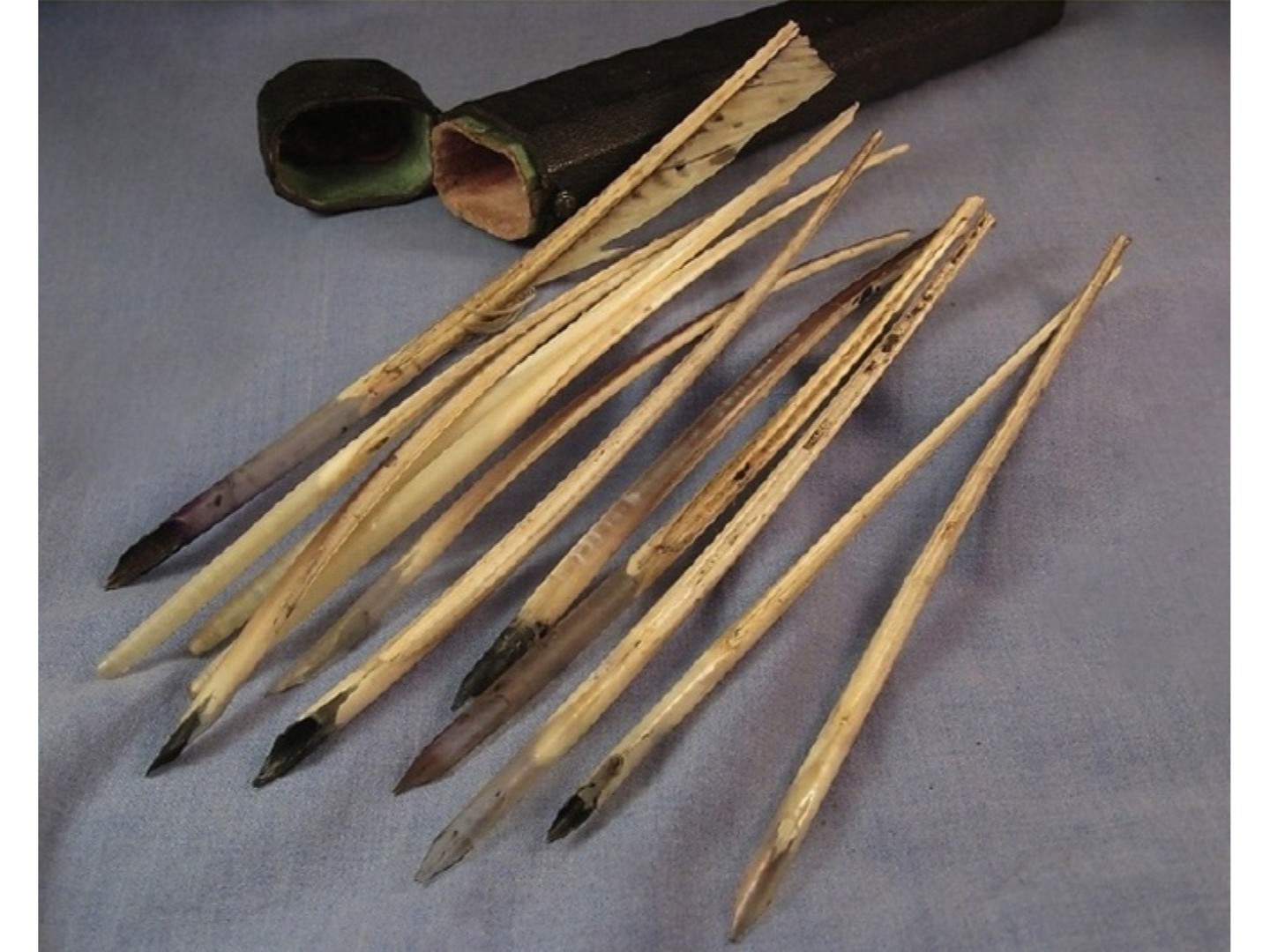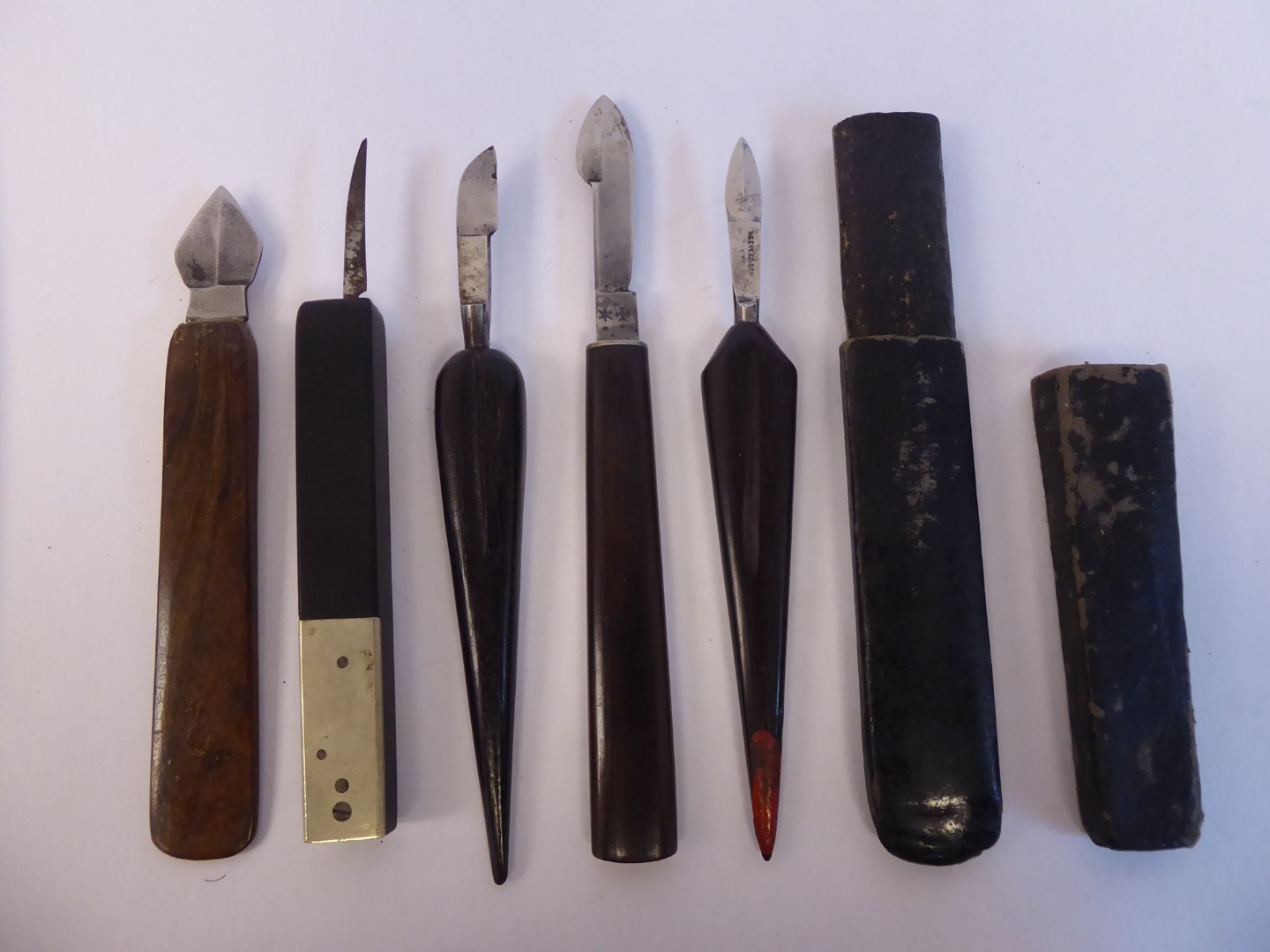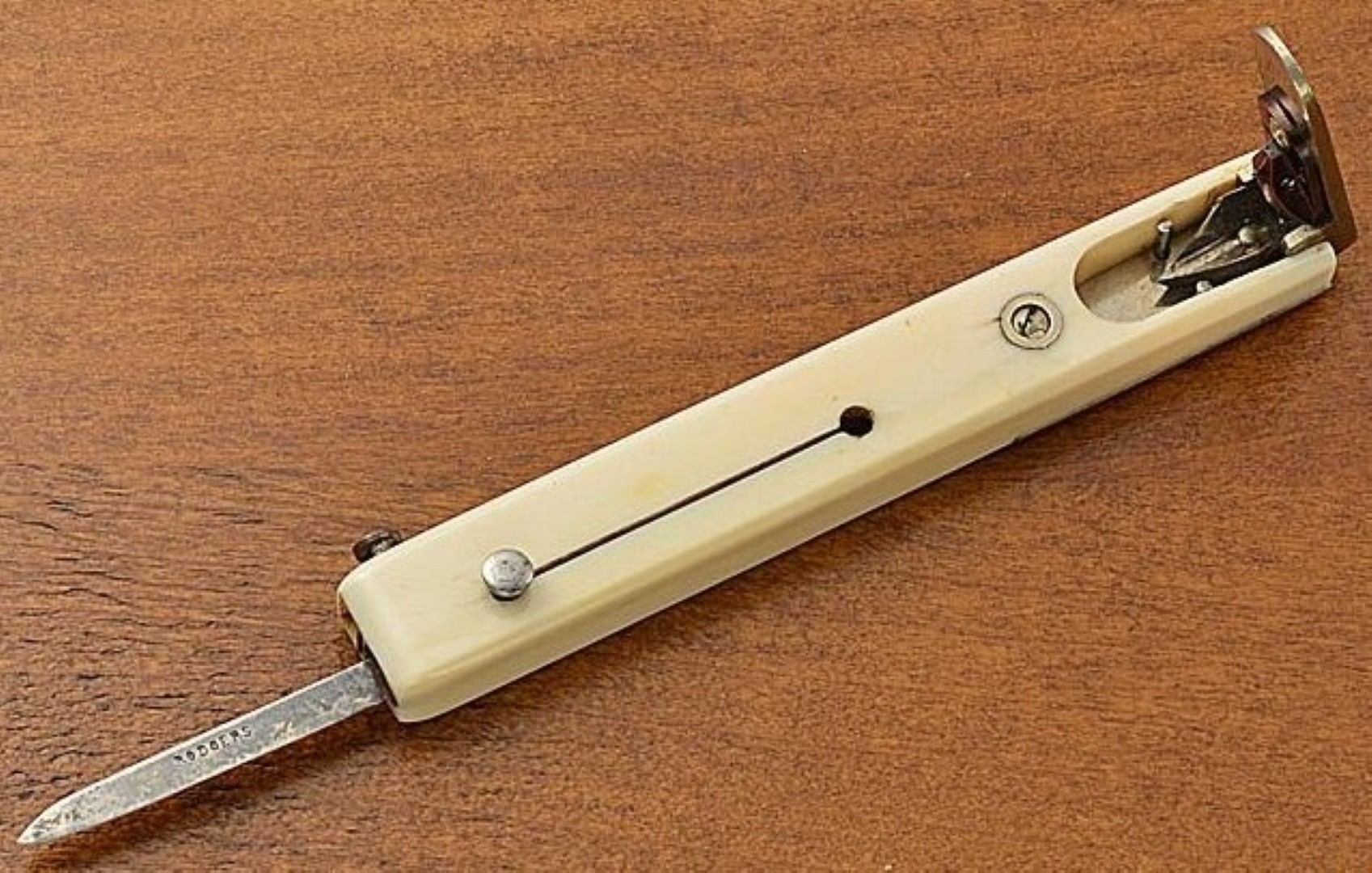
Inkipedia
Quill Pens
| Categories | Accessories |
Quill Pens
- Fowl Feathers: Due to their form and the nature of their use, quill pens were disposable items in this period – usually replaced in a few days. (Legend is Sir Walter Scott wrote an entire novel with one goose quill that came from the Hudson Bay area). Most quills were made from goose feathers (although apparently Queen Elizabeth I preferred to use swan feathers!) and each one would have to be properly prepared before it could be used for writing. Allegedly, the best quality quills came from Russia and Holland. Stages involved soaking the feather in water to allow removal of the internal membrane, along with cutting the stem to the correct angle and incising a functioning nib. Just preparing a quill was an art in itself, and no doubt many a feather was cast aside by a frustrated scribe who had been too hasty with his knife. Once a quill was ready to use, any writing would slowly cause the nib to wear away, meaning that a new nib had to be cut into each feather regularly, until eventually the pen would be too small to write with, and a new feather would be needed to start again. And contrary to popular belief and what we see in films, the feathers on each quill would have been stripped down rather than left intact.
- Keeping it Sharp: A writer always kept a knife at hand; it was used to quickly erase mistakes. Parchment sometimes had bubbles and contours, and a scribe used a knife to hold the material flat against the desk. Knives were also used to sharpen or adjust the quill pen tip. If the pen stopped holding ink, its tip could be reshaped with a sharp knife; a second extremely sharp knife may have been reserved solely for this purpose. During the 19th Century, classes were conducted to instruct students in the tedious art of cutting a quill nib. To sharpen the quill, a knife was needed – hence the word “penknife”.
- Quill Cutter: If one were lucky (and wealthy) a quill cutter made the process easier. Pictured is a quill cutter with ivory handle. One end has a nib cutting mechanism. There’s a retractable blade on the other end. This dates to mid to late 1800s.
Dates to the mid-to late 1800’s
Content disclaimer. The information posted is the owner’s best knowledge and may not have been vetted by the SOIC. We welcome comments, corrections, and additions, working to make our website information comprehensive and accurate.
Join the Society of Inkwell Collectors (SOIC) – it’s free!
Founded in 1981 as a non-profit organization,
we are documenting inkwells (and accessories).
We’re here to help and inform!


